Politics
Mangala
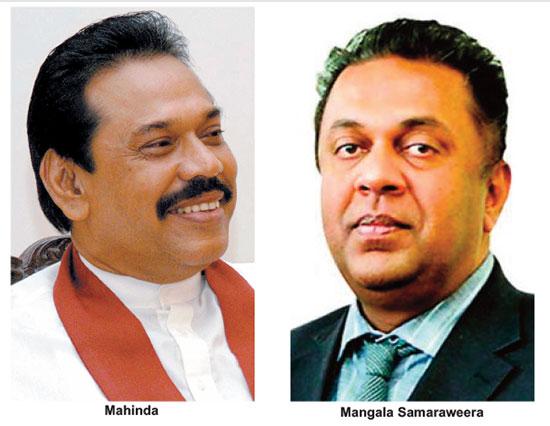
It’s a sign of the basic humanism in Lankans that, regardless of whatever ideology or credentials they held, we speak well of the dead. Judging by the many posts, articles, and memes shared across social media, everyone is speaking well of Mangala Samaraweera. This is nothing to be astonished about: Samaraweera, the most unconventional national politician who ever lived, was also the most likeable to a great many in the country. He was also, for many others, the most disliked; but if the torrent of obituaries and tributes is anything to go by, even they have begun praising him. Perhaps the best tribute one can paid to Samaraweera is that he cut through our instinctive tendencies to take sides in the political divide, uniting us through our universal contempt for politicians.
His legacy is mixed, complex, and debatable. Given the many phases he went through, it defies categorisation. His decision to leave Mahinda Rajapaksa in 2007 certainly spelt the end of one era and the beginning of another. He reinvented himself, turning from the insipid recrudescence of his early years. In doing so he ran the risk of tarnishing his electoral prospects, but having being returned time and time again by the people of Matara, he trumped all those who wished the worst for him. There is little to no doubt that, even with the bitter memories of the previous government, he would have been elected by his people at last year’s general election. That he chose to withdraw is a sign that he had rejected acceptance by one’s electorate as the litmus test for the sincerity of a public figure.
At the end of the day, such gestures, dismissed by some, appealed to those who turned the disparagement of public figures and officials into a regular pastime. Samaraweera was of course regarded as a hero by the country’s youth, predominantly but not exclusively middle-class and suburban. Those born after 1995 especially, who came of age between the last few years of the Mahinda Rajapaksa government and the first few years of this government, saw perhaps only one aspect to his politics. Few saw his other side. It’s not that they did not see that side, merely that by the time of his conversion to liberal democracy, a conversion which took a considerable time, they were so desperate for a representative who dared to differ; they accepted what he told them and believed in. The tributes that continue to flow, in that sense, remind us of Brecht’s dictum about heroes and the lack of them.
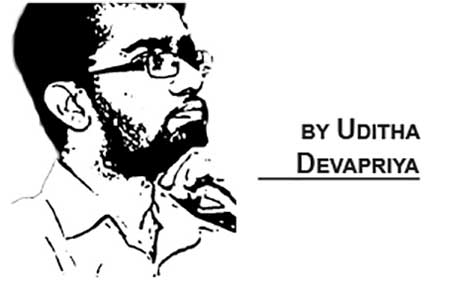 It was his beliefs, incidentally, that so polarised opinion about him. Ostensibly, he stood for liberal democratic values that gave pride of place to the individual over the government. One of his most ardent followers has, in a series of Facebook posts, outlined what he considers to be the essential facets of this political philosophy. Yet speaking for many of his followers, I doubt it was their faith in the tenets of liberal democracy which converted them to his camp. Samaraweera’s strength was his ability to interpret those tenets to a people who acted not on philosophies, but on promises. In this, he proved to be the exception to Regi Siriwardena’s view that Sri Lanka’s political right lacked a unifying ideology. One can claim that even this exception lacked such an ideology. But there’s no denying that he tried.
It was his beliefs, incidentally, that so polarised opinion about him. Ostensibly, he stood for liberal democratic values that gave pride of place to the individual over the government. One of his most ardent followers has, in a series of Facebook posts, outlined what he considers to be the essential facets of this political philosophy. Yet speaking for many of his followers, I doubt it was their faith in the tenets of liberal democracy which converted them to his camp. Samaraweera’s strength was his ability to interpret those tenets to a people who acted not on philosophies, but on promises. In this, he proved to be the exception to Regi Siriwardena’s view that Sri Lanka’s political right lacked a unifying ideology. One can claim that even this exception lacked such an ideology. But there’s no denying that he tried.
He was universally loved, yet also universally loathed. It goes without saying that he was loved and loathed for the same reasons. His admirers saw in him a crusader for the rights of the people, in particular minorities. They saw him as a bulwark against majoritarian extremism. By contrast, his critics, who fell into two broad camps, saw him as being needlessly engaged with issues that either did not matter to the wider citizenry or compromised on such concerns as sovereignty. The more nationalist-minded among them faulted him for tilting too much to the minorities, for demonising everything they held sacred, including the Buddhist clergy. Samaraweera never apologised for his candour; that more or less brought liberal admirers and nationalist critics closer. It was impossible not to have an opinion about him.
His political career reflected the times he lived in; that was in a way few political careers did. He entered politics through the SLFP. Appointed as that party’s organiser for Matara in 1983, he quickly gained a reputation for his initiative and decisiveness. His actions during the second insurrection proved his mettle: with his then friend and later foe Mahinda Rajapaksa, he campaigned to raise international awareness about the crimes of the UNP government. This continued even after the insurrection abated; on a visit to New York in July 1991, in an interview to the National Public Radio he attempted to correct certain misconceptions about the JVP held by the Western press. He took with him a list of some 40,000 people, including 1,000 schoolchildren, who had disappeared during the conflict; this list was never used, or mentioned, by any international agency.
Unlike most political figures, he did not shift overnight. His conversion to liberal democracy took time. One must, of course, be careful when placing this transformation in context and in perspective. Samaraweera’s political ascent coincided with a change in both national and international politics. With the collapse of the Soviet Union and the shift to the right of many left and socialist parties, he was as entranced by the promise of Third Way neoliberalism as any other politician. With the decimation of the Old Left in the People’s Alliance, brought about by Chandrika Kumaratunga’s tilt to the right, he embraced the new order, forgetting his past and engaging zealously in a restructuring programme which saw the privatisation of SLT. Samaraweera regarded this as his proudest achievement; no less a source of pride were his efforts at beautifying Colombo, at a time when Gotabaya Rajapaksa was studying in the US and Mahinda Rajapaksa was fighting on as a sidelined MP in the PA.
As MP and Minister, he became the loudest voice for a political solution to a military conflict. Few people shared his fervour, but in the interests of expediency, they all took his side. Sudu Neluma had the effect of discouraging recruits to the army, a volte-face that ran counter to the President’s policy of winning the war militarily. Yet, laudably, it also led to the reconstruction of the Jaffna Library, believed burnt to the ground by UNP allied goons 15 years earlier. These did not erode his friendship with those whose ideology he had long since abandoned, which is why he supported Mahinda Rajapaksa when CBK dithered and dallied about making him Prime Minister and, later, presidential candidate. With Samaraweera’s defection from the SLFP in 2007 and to the UNP in 2010, however, he signalled that he put his values before his friendships. He never explained his badmouthing of Ranil Wickremesinghe at the 2004 elections; one of his slogans against him had been “Ranilta Baha.” In a 360 degree turn which was to define the rest of his career and life, he joined his foe’s side.
These turnarounds endeared him to a mostly suburban middle-class milieu, particularly the youth. Certainly, there could not have been a better leader for as amorphous an outfit as the Radical Center; the latter showed clearly that he had not let go of his faith in the Third Way, even after the Bill Clintons and Tony Blairs of the world had long gone and the Emmanuel Macrons and Nick Cleggs were being forced to stick to their centrist credentials at the cost of capitulating to the conservative right. Samaraweera did not entirely succeed in reconciling these strands: a liberal at heart, he was a neoliberal in mind. This explains his aversion, not to Sinhala nationalism, but to almost all forms of political radicalism; for him, as for every Third Way neoliberal, reformist politics was preferable to radical politics. That is why he frequently conflated “socialist mindsets” with “religious majoritarianism.”
What is surprising here is not that he changed at all, but that he changed without attracting accusations of betrayal by the mainstream electorate. The same man who had railed against the “unjust administration” of J. R. Jayewardene and lamented the “holocaust” unfolding in the south could, three decades later, laud that government’s “incredible economic advances” and lament the “Marxist dystopia” the JVP was setting up in the south. No one complained, partly because socialism had, in the eyes of the middle-class, lost its appeal, and it was easy to badmouth the excesses of a radical “leftwing” outfit while sidelining the brutal excesses of a rightwing regime. That the Radical Center was radical only in its commitment to a Third Way neoliberal doctrine, hence, showed well in the remarks of its leader.
Less defensible, by contrast, were Samaraweera’s intervention at the Wayamba elections in 1999, the massive credit card fraud that took place under his watch at SLT, and his siding with Ranil Wickremesinghe against Sajith Premadasa in a leadership struggle that weakened the UNP from 2011 to 2020. Not many will remember that he broke up an anti-Ranil protest in 2013, compelling Premadasa, in justifiable anger, to rail against “migratory birds” trying to chart the UNP’s course. Samaraweera did shift to Mr Premadasa in 2019, but this was a temporary measure; having lent his support to the SJB, he withdrew and left electoral politics. He then revealed his biases: having condemned the SLPP and the SJB as occupying the same political page, he called Wickremesinghe the best president we never had.
That such lapses were ignored, even forgiven, by a young, upward aspiring electorate on the lookout for decent representatives is, of course, a sign of how low standards have fallen in politics today. The truth is that Mangala Samaraweera epitomised the paradoxes of his times in a way none of his colleagues did. I find it difficult to square his concerns for the citizenry with his advocacy of an economic paradigm which rested on the sustained exploitation of the many. But this was a rift he never really saw, nor cared to resolve.
It says a lot about the intellectual obduracy of those engaged in politics, as well as those endeavouring to engage in it, that both liberal admirers and nationalist critics saw his liberal credentials as a genuine article. His more radical critics saw through the mirage better. Yet as the Communist Party’s and the JVP’s tributes to him show, even they considered his values reason enough to ignore his flaws. He was a man of his convictions, even if he refused to see the gap between his social and economic ideals. He was certainly a man of his word.
The writer can be reached at udakdev1@gmail.com
Features
The Aftermath of the Parliamentary Elections of 1970
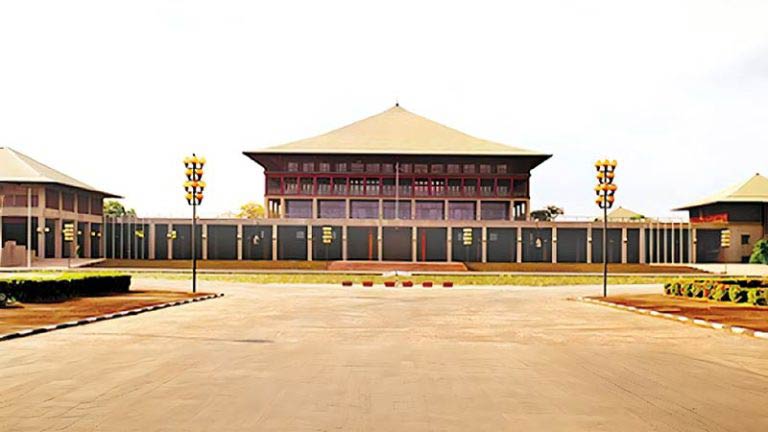
Lessons from my Career; synthesising management theory with practice – Part 2
by Sunil G Wijesinha
The Kamkaru Anduwa
I was in the last year of my training and stationed at the State Engineering Pre-cast Yard at Narahenpita. I was on a unique project experimenting with a concrete boat modelled on a popular FAO wooden fishing boat design. The election fever was at its peak. The workers had high hopes for a “Workers Government” (Kamkaru Anduwa). They were expecting a “dictatorship of the proletariat, ” hoping to end all their woes. They were promised the establishment of “Janatha Committees”, which would oversee the work of the officers and engineers. The spirits were high because the UNP government was no longer popular, and the United Front coalition led by the SLFP was tipped to win in a landslide.
I was very careful and avoided any semblance of affiliation or partiality to any ideology. One of my colleagues was a diehard Samasamajist who would forward compelling arguments as to why socialism and a state-run economy would be the best for the country.
The Aftermath
Election Day was, as usual, a holiday. By the early hours of the next morning, it was clear that the United Front of Mrs Bandaranaike, along with the Trotskyites (Samasamajists) and the Communist Party had won convincingly. When I arrived at my worksite that morning, what I witnessed was shocking. The Works Manager was pulled out of his office by the workers and kicked out of the site. It was celebrations and rejoicing and hooting and jeering. No one was working. No one was in charge. It was anarchy.
My boss, who was stationed at the Head Office, decided to make a site visit. He obviously chose the wrong day. As he arrived, he was greeted by the workshop union leader with lit crackers thrown at his body. There was nothing I could do against a massive hostile crowd. Being a burly man, he charged at them, and they all retreated but quickly returned with even more crackers. Finally, my boss decided to exit and beat a hasty retreat. The workers were jeering and hooting until he was out of sight. He had done no wrong, but unfortunately, he was a part of the “bourgeois” who the workers despised.
One of the foremen who often participated in our arguments during tea and lunch breaks remarked, “Mr Wijesinha, we have still not figured out which party you supported.” I was thankful for my neutrality. If not, I would have been one of those who were driven out with crackers.
A little while later that day, a gang of red-shirted supporters arrived, led by a well-known Samasamajist. He addressed the cheering workers about the wonders that would soon unfold and demanded that all stop work and come to a celebratory meeting near the Regal cinema.
We, too, left the site in the early afternoon because we had to attend a scheduled monthly lecture by a senior engineer at the Head Office. The subject was “Labour Management”. After arriving at the Head Office, we learned of the horrors that morning. The General Manager had been forced to kneel and worship a photograph of Mrs Bandaranaike. We noticed many professionals in groups discussing the future for them while many at lower levels were celebrating. Some of the engineers left the country a couple of months later. We got the news that there was no celebratory meeting near the Regal cinema, but it was a ruse to collect people to attack Lake House, which was believed to have supported the defeated UNP.
When our lecturer didn’t turn up for the lecture, I went to his office to remind him that we were waiting for him and that it was well past time. He responded that having observed the new environment unfolding, he could no longer lecture on “Labour Management.” We were happy to go home early that day.
The next morning, the situation at the site was very different. The workers were discussing and boasting about how many Lake House typewriters they smashed, how many bundles of newspapers they set on fire, and so on. It took a couple of days to restore some order at the site.
In a few months, the Euphoria was over. The workers who would telephone their political masters and address them as Comrade (Sahodaraya) began to drop this salutation and addressed them as Sir, much to the amusement of the officers. The workers realised very soon that a Kamkaru Anduwa was, in reality, not what they imagined and that it was not going to be. However, perhaps in frustration or anger, the Golf Links Housing site experienced a riot. The workers set upon the management for no apparent reason. It took months for peace to return to the pre-election level.
Learning Lessons
Labour management was never the same again, and this was a major turning point. Gone were the days when officers could shout at, could throw their shoes at, punish, and penalise workers at their whims and fancies. While the carnival was over for the workers, the management also learned many lessons.
I did some reflection in the following months, having learnt in theory how labour management had evolved historically. First, it was the KITA style (meaning “kick in the arse”) type management, then came the Frederick Taylor movement, where engineers designed the best way and only the “hands” of the workers were used. Thereafter came the Human Relations School of Management with a more humanistic approach to management. In other words, they proposed treating the worker not merely as a pair of hands but as a human being with a “heart” and feelings. Finally, the Japanese proposed that the in addition to hands and a heart the worker has a significant unused potential: the brain.
At one of the lectures by a senior engineer, we were guided on a more humanistic approach to management. His advice was never call a worker by his number (which we would often do), help him in difficult times, never financially penalise a worker (badata gahanna epa), give small inexpensive gifts to their children. I followed this good advice. It was bolstered and became more systematic after learning the Japanese concepts with similar philosophies in later years. I have been successful in managing labour and unions. The paradigm shift in thinking has been beneficial to the country, although I have often been accused of being a Marxist or a person who spoils the workers. Nevertheless, I will vouch for my approach to labour management using 1970 as a turning point where we all learnt lessons.
(Consultant on Productivity and Japanese Management Techniques
Retired Chairman/Director of several Listed and Unlisted companies.
Awardee of the APO Regional Award for promoting Productivity in the Asia and Pacific Region
Recipient of the “Order of the Rising Sun, Gold and Silver Rays” from the Government of Japan.
He can be contacted through email at: bizex.seminarsandconsulting@gmail.com)
Features
Environment and Climate Change: Missing Link in Sri Lanka- India bilateral relations

by Dr Sarala Fernando
The detailed Joint Statement issued on December 16, 2024 after President Dissanayake’s State Visit to India lists a number of areas covered in the bilateral discussions: Political Exchanges, Development Cooperation, Training and Capacity Building, Debt Restructuring, Building Connectivity, Energy Development, Peoplecentric Digitization, Education and Technology, Trade and investment Cooperation, Agriculture and Animal Husbandry, Strategic and Defence Cooperation, Cultural and Tourism Development, Fisheries issues and Regional and Multilateral Cooperation.
The missing link is evident – how can the two countries ignore the signs of climate crisis everywhere? As I write there are devastating wildfires in California, the largest ever ice block to break off from the Arctic is heading towards the UK which is experiencing unprecedented heavy storms. In the last year alone, Asia has experienced a number of major earthquakes of over 7 Mw since Honshu in Japan on January 1 2024, to Taiwan, Indonesia, PNG, China, Vanuatu and now Tibet on January 8, 2025. The climate crisis also includes the unprecedented loss of biodiversity and extinction of entire species. As an island vulnerable to both man- made and natural disasters, should not Sri Lanka make environmental protection and climate change a central topic in all its bilateral discussions with foreign partners?
While the official emphasis is usually on economic diplomacy, we tend to forget that since historical times visitors came to this island attracted by tales of its natural beauty and nature’s treasure of resources. This is why it is incomprehensible that while Buddhism is given pride of place in our Constitution, the values this philosophy enshrines of compassion for all living beings and protection of nature and wildlife are somehow ignored.
Take by contrast the language in the Indian Constitution which states: “It shall be the duty of every citizen of India to protect and improve the natural environment including forests, lakes, rivers and wildlife and to have compassion for living creatures.” (51 (a) g) Then there is also Article 48 prohibiting the slaughter of cows, calves, and other milch and draft cattle, calling upon government to organize agriculture and animal husbandry on modern and scientific lines, preserving and improving breeds. Here one recalls the sterling efforts of our former Speaker Lokubandara who drew attention to the plight of the “kiri-amma” in Sri Lanka and called for this country to take an example from India and ban its slaughter.
Yet, it seems today that we are more interested to promote a gun culture in this country, from the minister who openly calls on farmers to use any means to protect their fields to the schools where pistol and rifle shooting, archery have become national sports to be encouraged among school children. Do they not see where the freedom to carry guns has taken the United States to such a plight that not a day goes by without a school shooting and unnecessary deaths?
Some argue that infrastructure growth, for example, should be prioritized over environment and climate change. It is I suppose easy to quantify the building of a bridge over protection of the environment of which the impact will be seen mainly by coming generations. Yet there is good news in Sri Lanka, thanks to the efforts of dedicated researchers like Dr Prithiviraj Fernando and Wildlife department experts, who have made progress in promoting the co-existence of both farmers and elephants through careful electric fencing over farmlands taking care not to interrupt elephant corridors which fencing then is removed when the harvest is taken and the stubble left for the elephants to graze upon.
There was also good news recently reported from Haggala Wildlife Range covering Talawakelle, Kotmale and Walapane in a land area of 95,000 hectares where an effective plan to protect the hill country leopards has resulted in no leopard deaths. The plan comprised 22 public awareness programs and search operations to remove 320 leopard traps. The bad news is that so many traps may suggest organized criminal attempts to trap leopards perhaps to feed the exotic animal parts trade in East Asia, which is something our police should be following up on.
A special environmental protection and climate change plan between Sri Lanka and India is required to anticipate the risks and train in disaster management, drawing upon the exchanges of experience and knowledge of scientists in the different fields. I am remembering the speech made by Prof MS Swaminathan many years ago at the Lakshman Kadirgamar Institute when he foresaw already the impact of climate change on agriculture patterns in India which would turn previous productive areas to desert and requiring training farmers to adapt to new crops and new conditions which would come inevitably.
Protection of the maritime areas between Sri Lanka and India should be prioritized including monitoring of the fish stocks and health of the seabed and the very existence of the sand banks which comprise Adams bridge. Sri Lanka would benefit from training in managing ports receiving hazardous cargo so that disasters like Express Pearl of May 20, 2021 should never happen again. By June 2021, twenty five billion small plastic nurdles had spilled, comprising the worst such spill ever recorded in the world, poisoning the surrounding waters from which the remains of 417 turtles, eight whales and 48 dolphins were recovered.
In this light, one wonders how Sri Lanka can manage the safety of the proposed oil and gas pipelines proposed to boost “connectivity ” with India and what safeguard is there that this link will not be blocked someday for political reasons as we see in Europe today? The safety of undersea pipelines is already in the news with cables apparently cut in the Baltic Sea and in the contested waters of the South China sea between the Philippines and China.
Sri Lanka and India once had a land connection and even now an island separated from a continent, there are many points of comparison and subtle differences. For example, while craftsmen and artistic traditions came from India, Prematilleke argued that in all aspects of ancient Sri Lankan art , “the inspiration drawn from contemporary ornate and exuberant Indian art tradition was mellowed down to a restrained charm and simplicity”. This relationship of subtle difference is seen in nature too. This year, the Neelakuringi (strobilanthes) has bloomed profusely over the western Ghats attracting droves of visitors, in its normal flowering cycle of 12 years. But the Nelu has not bloomed this year as expected on Horton Plains… Have the plants been affected by some change in the weather pattern and can we expect this splendid event to take place next year?
(Sarala Fernando retired from the Foreign Ministry as Additional Secretary; her last ambassadorial appointment was as Permanent Representative to the UN and International Organizations in Geneva . Her Ph.D was on India-Sri Lanka relations and she writes now on foreign policy, public diplomacy and protection of heritage).
Features
Kachativu, Mackie Ratwatte bribery case and its consequences
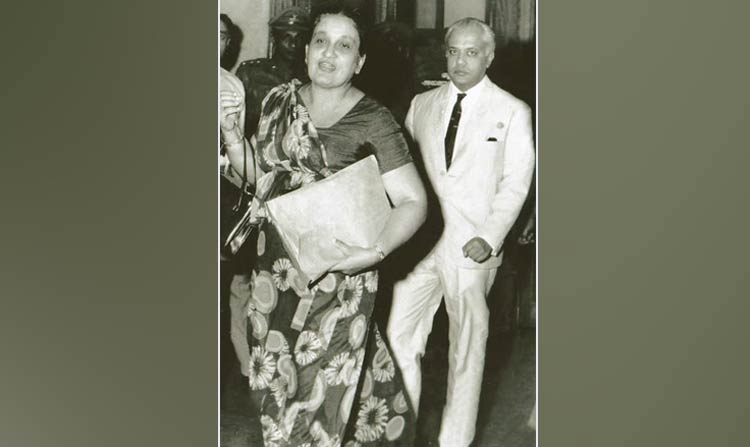
(Excerpted from Rendering Unto Caesar by Bradman Weerakoon)
There was always something new on the agenda with India. Although the question of statelessness had been virtually resolved by Mrs Bandaranaike with the Sirima-Shastri Pact of 1964, the issue of the ownership of the tiny island of Kachativu in the Palk Strait between India and Ceylon began to acquire importance.
Kachativu is a barren piece of rock about a square mile in extent and would possibly have no strategic value in terms of real estate for Sri Lanka and certainly not for India which has such a massive territory to contend with. Yet, we were now having to deal with this dot of land on account of several reasons.
One was that it was a base for illicit immigrants from South India who had been making use of the island as a transfer point for going on to Jaffna and Mannar. The other reason was that, with oil explorations going on in the Palk Bay the media, particularly, were beginning on both sides to talk about the value of Kachativu.
India based its claim on the historical reason that it had always been within the suzerainty of the Raja of Ramnad. Our claim to Kachativu was that, from Dutch times the government had exercised an administrative control over the island. In more recent times what was known was that the Catholic Diocese of Jaffna had established a church on the island and that one of its priests would officiate at the annual church feast. There would be an annual pilgrimage to Kachativu organized by the Catholic community of Jaffna.
Now the two governments were getting active on it and it was going to be on the agenda for Dudley’s. talks with Indira Gandhi in Delhi. The talks took place between November 27and December 4, 1968. It was a private meeting in Indira Gandhi’s office in the Lok Sabha. Although Indira wished to settle the matter amicably, she mentioned that there could be difficulties with the government in Madras if she agreed to surrender India’s claim to sovereignty.
The problem had become more confounded by the fact that this was the time when the demarcation of the territorial seas between India and Ceylon was being debated and the question of where the median line between the two territories would run was important. Both countries had by now opted for a 12-mile territorial sea limit and this would lead to problems because at certain points the distance between the two coasts was less than 20 miles.
Proposals were made by the Indian side that the demarcation line might just come up to Kachativu on the Indian side leaving the island on the Sri Lankan side. The Indian problem was that if Kachativu was taken as the last point of Sri Lankan territory, then the Sri Lankan territorial waters could be claimed to extend almost up to the Indian shore.
Dudley understood the Indian position very well and on his return to Colombo, informed the Cabinet that he was inclined to agree with Indira Gandhi’s-proposals about the median line coming very close to Kachativu but leaving Kachativu to Sri Lanka. Discussions continued thereafter at meetings in London where both prime ministers went for the Commonwealth Prime Minister’s Conference. G V P Samarasinghe, Permanent Secretary, was as usual extremely diligent in pursuing Sri Lanka’s claim.
The Mackie’ Ratwatte Bribery Case
The one and only occasion in my public service career, on which I had to give evidence in court was in the Mackie Ratwatte case. Although the incidents around which the case was constructed occurred during the time of Sirimavo Bandaranaike, when Mackie was her private secretary, the charges against him began to be put together in the time of Dudley Senanayake’s government.
The charge against Mackie Ratwatte was fairly straightforward. That is, he had been approached by an Indian businessman, a Muslim, who complained to the authorities that although he had given a bribe to Mackie for obtaining his citizenship, he had not been able to obtain it. There were a few witnesses who apparently had testified to the fact that the money had been passed over at Mackie Ratwatte’s Colombo home during the time that he was private secretary to the prime minister.
I came into the picture when the Superintendent of Police T B Werapitiya, attached to the CID at that time, which was investigating the case, produced before me a government file with a minute by Mackie to the Assistant Secretary in the Ministry of Defence & External Affairs, dealing with citizenship applications, V J Harry Gunasekera. The minute itself was innocuous. It said something like: ‘Asst. Secretary/D & EA: for necessary action. Mackie Ratwatte’s P/S/PM’.
I was asked to identify the writing as that of Mackie Ratwatte’s, since I was familiar with his writing. I stated to the CID that it looked like his writing. I was then asked whether it was usual for the private secretary to make such a minute to an assistant secretary. Since the usual procedure in the prime minister’s office at Temple Trees when Mrs Bandaranaike was working there, was for official work to be handled by me, and the private secretary limited himself to personal matters affecting the prime minister her interviews, travel and entertainment, etc, I said that it was not usual for the private secretary to make orders on official letters addressed to the prime minister. In this case, the complainant had personally himself addressed a communication to the prime minister seeking her consideration for his application for citizenship.
When the case against Mackie Ratwatte came up in the District Court of Colombo, the government clearly wanted to make the most of political capital on the charge. The Bribery Commissioner, Panditha Gunewardene had the matter referred to the Acting Attorney- General, Victor Tennekoon. Tennekoon thought there was no prima facie case. But when he, shortly afterwards, accepted elevation to the Supreme Court, A C M Ameer, QC (Queen’s Counsel now known as PC or President’s Counsel) from the Bar, a strong supporter of the UNP and the brother- in- law of the candidate for the Balangoda seat who habitually contested Sirimavo’s brother Clifford, was appointed Attorney-General.
The prosecution case was presented by the Attorney General himself Since my evidence was, in my view inconsequential, I did not think I would be called as a witness in the case which was to be taken up in the District Court. All I could conceivably say in court was the relatively innocuous proposition, that the writing was Mackie’s and that the action was not what he usually did.
However, the Attorney-General thought otherwise. He summoned me to be a prosecution witness and proceeded to examine me quite lengthily. The defence, very ably led, in my cross-examination, established, I thought quite clearly, to the court that although the minute was not usual, there could have been circumstances, eg. my absence from office at that time, for the private secretary to assume that it was proper for him to send the letter along to the Assistant Secretary in the Ministry of Defence & External Affairs, for suitable action.
Clearly, the prosecution case was flimsy as my evidence made out. The eye-witnesses were not deemed credible and the District Judge, quite properly in my view, discharged Mackie without even calling on the defence. Later, to illustrate the convolutions of politics, the judge who heard the case, S S Kulatilleke became a minister of cultural affairs in the Sirimavo government that followed Dudley’s in 1970. I had not informed myself about the political ramfications of the case and had dealt with it purely in terms of what I knew about office procedures. Dudley himself never spoke me about the case, or my evidence.
I thought the matter would end there, but it didn’t. It dogged me for virtually the rest of my career in the public service. Sirimavo herself was apparently very upset about my appearing for the prosecution. As she put it to me once in Galle, at the Harbour Inn hotel on Rumassala Kanda when I met her many years later, just prior to my retirement from the civil service and government, why could I not have defended Mackie, after all the closeness of my association with the family. This was her only question.
I replied that while I personally considered Mackie as one of the most honourable men, and would have said so if asked in any tribunal, my duty as an impartial public servant was to speak objectively, to the facts of the matter, especially in court. Thereafter, it was a matter for the court, depending on the balance of evidence to determine guilt or otherwise. But unfortunately, my point of view was not shared by Mrs Bandaranaike and some members of the larger family. As a result, I was immediately transferred from the post of Secretary to the Prime Minister and made Government Agent of Ampara as soon as Dudley’s term was over in April 1970 and Sirimavo returned to office.
It also led to my six years of exile in the districts; to the loss of opportunities, of a years ‘sabbatical’ at Queen Elizabeth Hall at Oxford; to a three month stint with the World Bank as a consultant on district administration in Bangladesh and to my retirement from the public service in 1976. 1 was convinced that with a government against me I would never again get a posting in Colombo commensurate with my seniority.
-
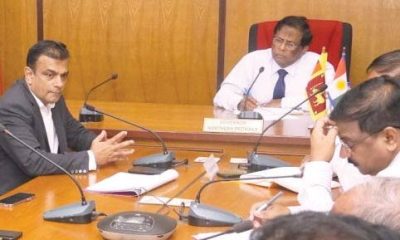
 News4 days ago
News4 days agoNew Bangalore-Jaffna flights in the works
-
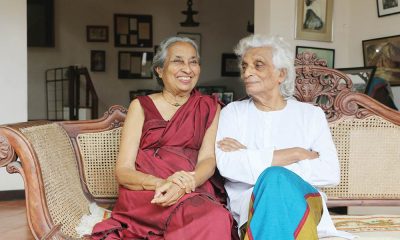
 Features6 days ago
Features6 days agoA singular modern Lankan mentor – Part I
-
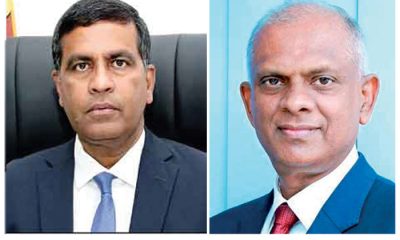
 News2 days ago
News2 days agoCID questions top official over releasing of 323 containers
-
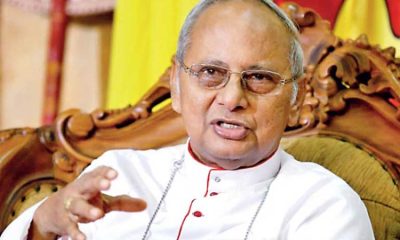
 News4 days ago
News4 days agoCardinal says ‘dark forces’ behind Easter bombs will soon be exposed
-
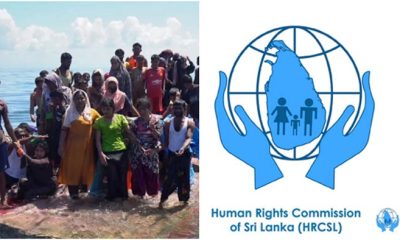
 News4 days ago
News4 days agoHRCL reports on Rohingya asylum seekers
-
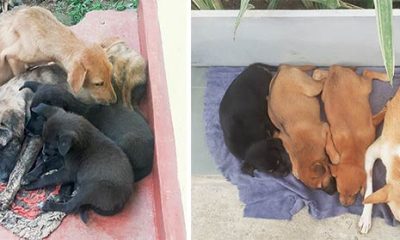
 Opinion6 days ago
Opinion6 days agoA New Approach to Rabies Eradication in Sri Lanka
-

 Features3 days ago
Features3 days agoA singular modern Lankan mentor – Part II
-

 Business6 days ago
Business6 days agoA record USD 350.8 million in worker remittances in 2024











